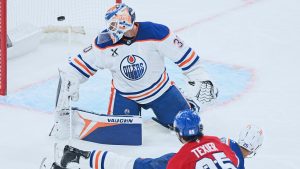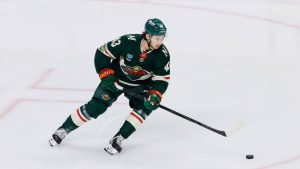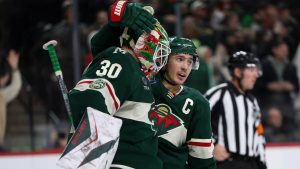Alex Ovechkin continues to climb the NHL record book as he further cements his status as one of the greatest goal scorers in hockey history. The current league leader in goal scoring with 11 in 12 games, Ovechkin’s elevated himself to 741 career goals, which is tied with Brett Hull for fourth all-time.
Video by Prashanth Iyer
The winger’s scoring to open the 2021-22 season puts him on pace for 75 goals across an 82-game season. As elite of a scorer as he may be, that probably isn’t feasible for the 36-year-old. But he should be expected to continue to push the limit this season — already Ovechkin’s making such an impact without connecting on one of his greatest weapons: the one-timer.
So, how did Ovechkin get off to such an outstanding start on the scoresheet this season, and what’s expected for him moving forward?
Let’s dive in.
Ovechkin is among the most frequent shooters in the league this season in all situations, even when accounting for his ice time. Where he’s seeing an increase in shots so far is on the power play.
The Capitals’ captain is known for his power play impact, particularly from his ‘office’ in the left circle. Ovechkin has a lethal shot and it’s key for him to play on his off-wing, especially on the power play, for an improved shooting angle as the work of Arik Parnass, now of the Colorado Avalanche, explains.
The heat map below helps us visualize and put in context just how much of his scoring comes from that area of the ice, dating back to 2016-17.
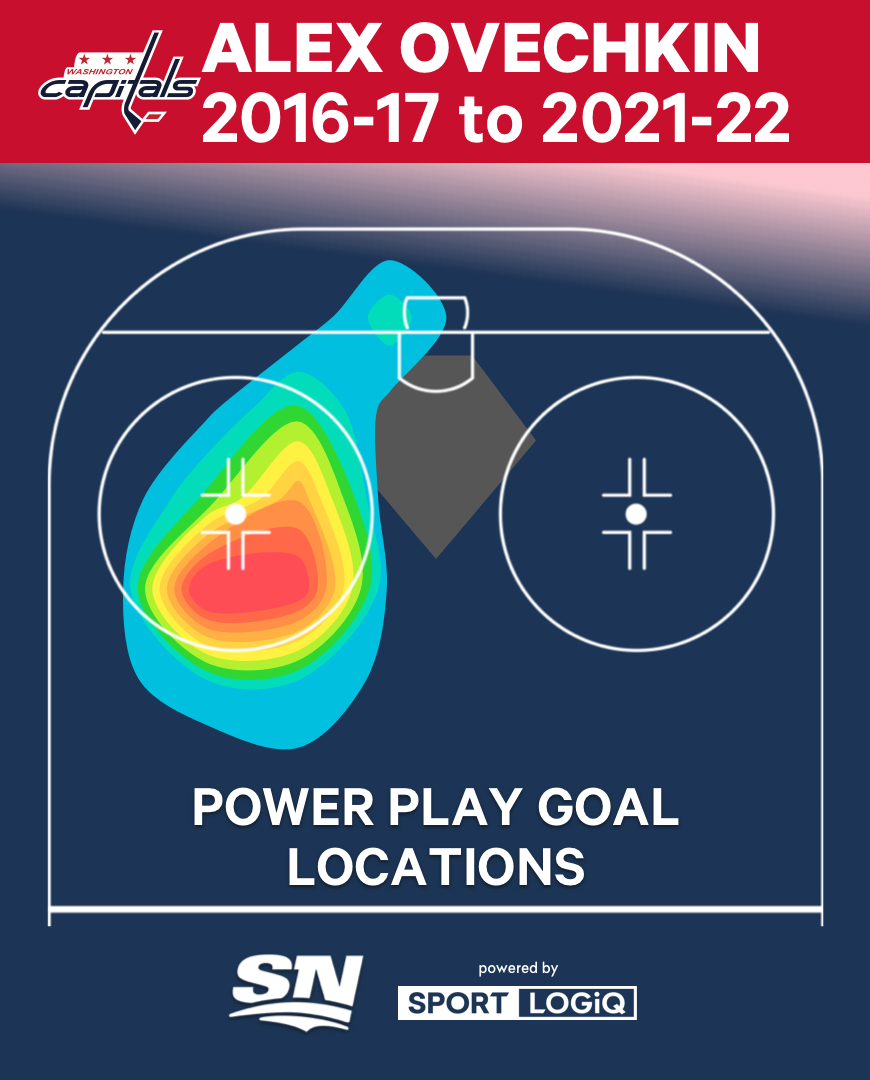
Last season, Ovechkin was one of the most frequent shooters on the man-advantage on his way to tallying nine PP goals in 45 games. As expected, he one-timed the puck at a high rate of 19 per 60 minutes, which made up about 53 per cent of his shot attempts on the power play.
So far this year, he’s up to two power play goals. There’s only so much to draw from 12 games, and even less from just the power play time. But we can see early trends developing, like his increased shot volume to start the season; Ovechkin’s attempting about eight more shots per 60 and one-timing it more often — those type of shots compose about 67 per cent of his attempts.
Ovechkin, a right-handed shooter, puts himself in a prime position to take one-timers, a shot that he’s become synonymous with. As Parnass analyzed, the one-timer is one of the most dangerous shots on the power play. Ovechkin’s shooting ability kicks that danger right up to the next level.
But even with his increased efforts, he has yet to score with his one-timer this season.
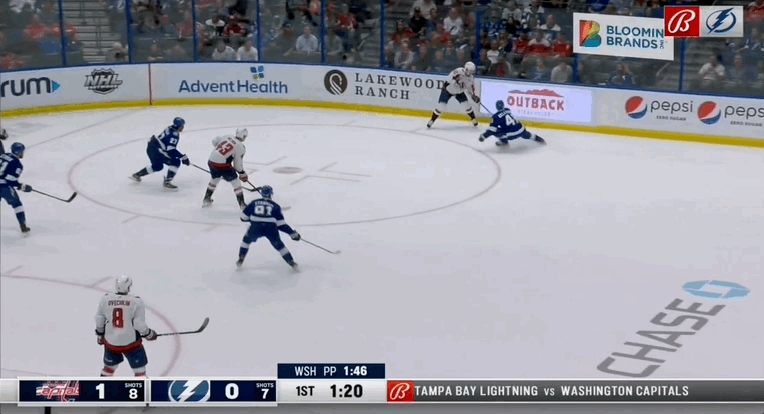
It’s possible that a change in personnel on the man advantage is influencing it. Last year, joining the sniper was Evgeny Kuznetsov, Nicklas Backstrom, T.J. Oshie, and John Carlson. This season, Washington’s options were already limited to start without Backstrom. And now, Oshie is sidelined, too.
Ovechkin has always been ‘the guy’ on the power play because he’s the best shooter. It’s not a matter of what he’s going to do at this point in his career — it’s how much he’s going to do it, really. But without two fixtures of the unit (who have been replaced by Tom Wilson and Conor Sheary), there’s less dimension to the Capitals’ PP1. In theory, that puts more pressure and attention on Ovechkin’s coveted shot.
But even with it being more obvious that the unit is going to rely on Ovechkin’s efforts, opponents aren’t taking his one-timer away — he’s attempting it at one of his highest rates in recent years.

Still, he’s finding other ways to connect on the power play — like jumping on rebounds when his initial shot doesn’t end up in the back of the net.

Ovechkin’s increased shooting on the power play, though, may explain why his all-situations shot rates are somewhat level from years past despite a dip in his 5-on-5 shot rates.
Over the years, Ovechkin’s 5-on-5 tallies generally make up just over half of his yearly scoring. Of course, there have been exceptions — between 2012-13 and 2014-15, for example, closer to 40 per cent of his goals came at 5-on-5. But this year, he’s right in the range he’s stayed in over the past few years with about 55 per cent of his goals coming at 5-on-5. [sidebar]
He’s just converting on fewer attempts, which can be a slippery slope for most scorers. Right now, Ovechkin is shooting at almost 21 per cent at 5-on-5, which is far above his career average, and generally what comes up will eventually regress down closer to average.
And along with a change in shot rate, his locations don’t yet match last season in terms of quality.
Last year, as pictured on the heat map below, Ovechkin shot the puck from all over the ice, with heavier concentrations in the home plate area — particularly the net-front and slot areas, and high in the circles.
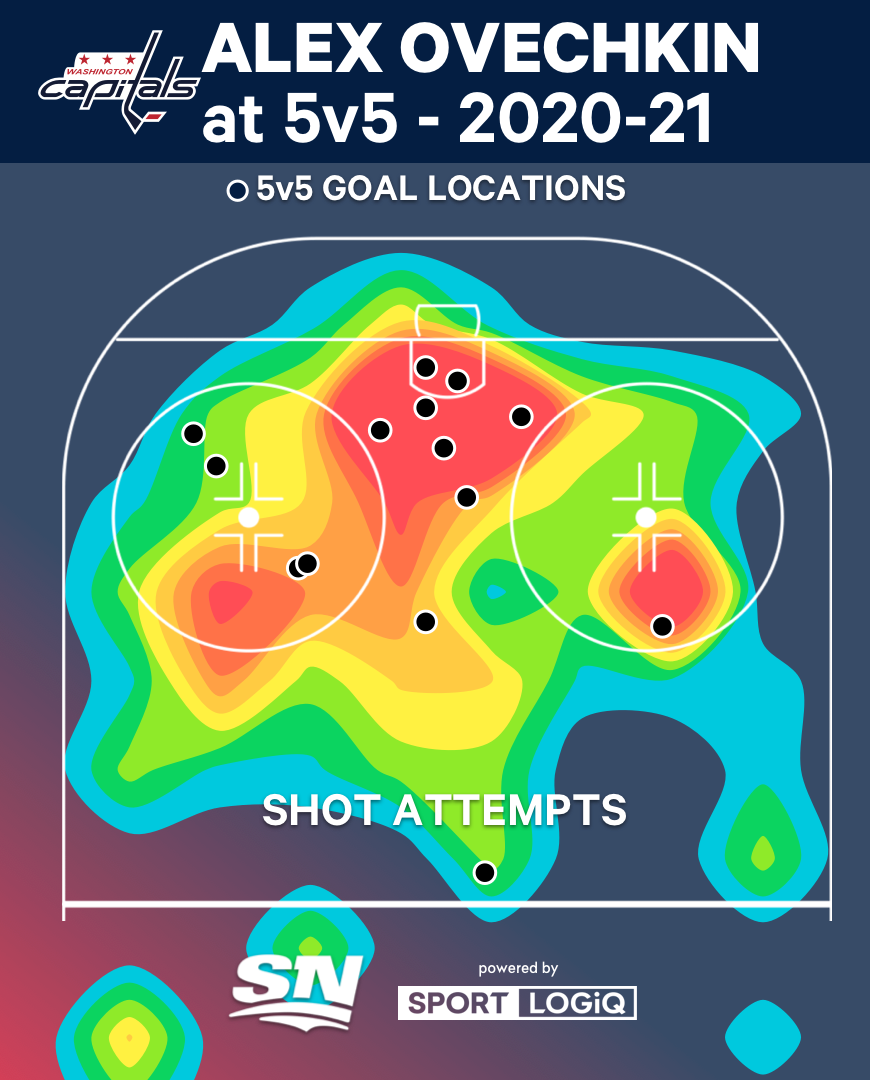
This season, obviously, the density isn’t as high across the board seeing as it’s 12 games of data to last year’s 45. While Ovechkin’s efforts in the left circle are consistent, he isn’t generating as much from the right, nor is he creating as high of a rate of shots from the slot.
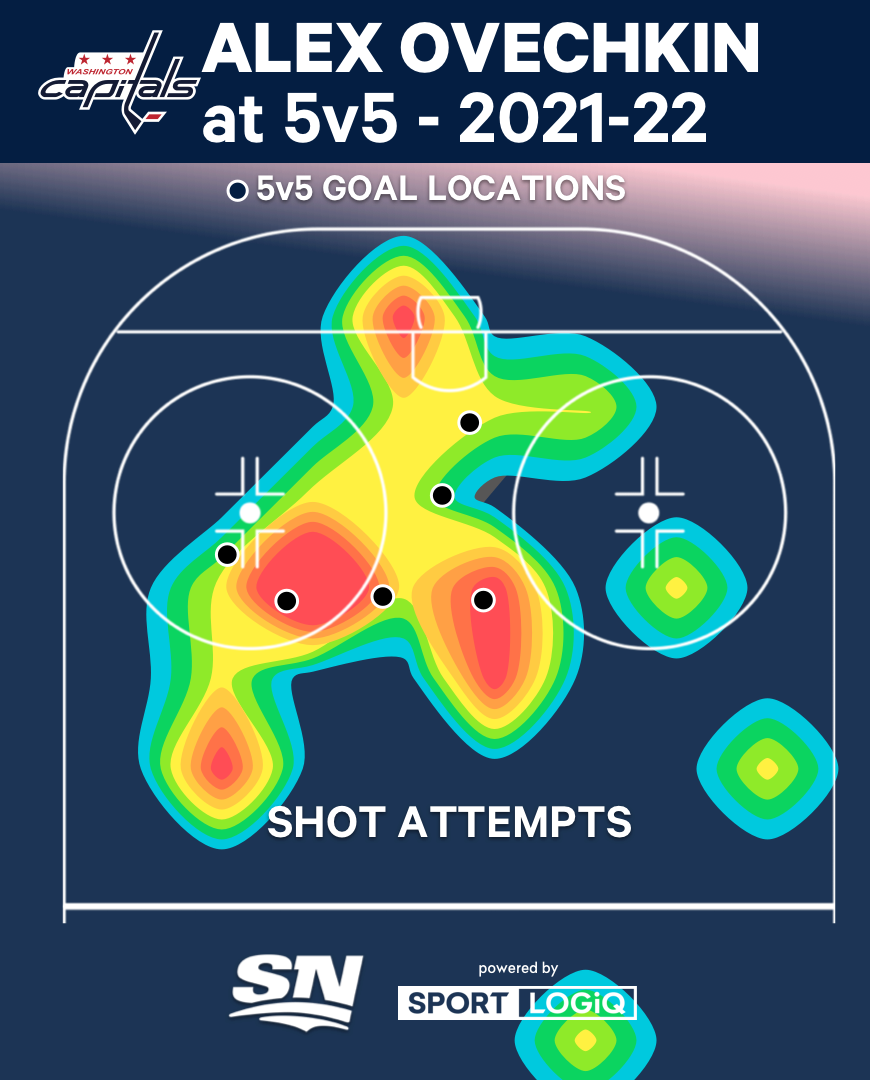
It’s worth noting that Ovechkin’s shot locations have evolved throughout his career so a slight adjustment to open this season isn’t entirely new to him (and it’s possible that it starts taking shape closer to what’s expected, especially as the Capitals get healthier).
But a slightly lesser rate of one-timers is part of that decreased shot rate. Backstrom’s and Oshie’s absence could also be affecting him here. Kuznetsov had the highest percentage (20.6 per cent) of shot assists on all of Ovechkin’s shot attempts at 5-on-5 last season, which was only fitting given that the centre spent the most time on ice with him. But Oshie (13.3 per cent) and Backstrom (12.7 per cent) weren’t too far behind, despite not skating alongside Ovechkin as often. Compare to this year with Kuznetsov assisting Ovechkin’s shots about 54.5 per cent of the time, with the next highest percentages coming from Dmitry Orlov and John Carlson, both at 12.1 per cent. So, Ovechkin may have fewer passing options than he generally does, or defenders could be trying to keep the focus on limiting Kuznetsov from threading Ovechkin for that shot knowing he’s the obvious choice for the pass.
A player like Ovechkin can still generate quality sequences without being teed up with the perfect pass, though.

The fact Ovechkin’s on a scoring tear without his one-timer shows the dimension to his game — he has more in his arsenal than just one shot, even if that’s the one he’s leaned on most. And, as he’s showing this season, Ovechkin is still creative with his scoring sequences, which only makes him that much tougher to defend.
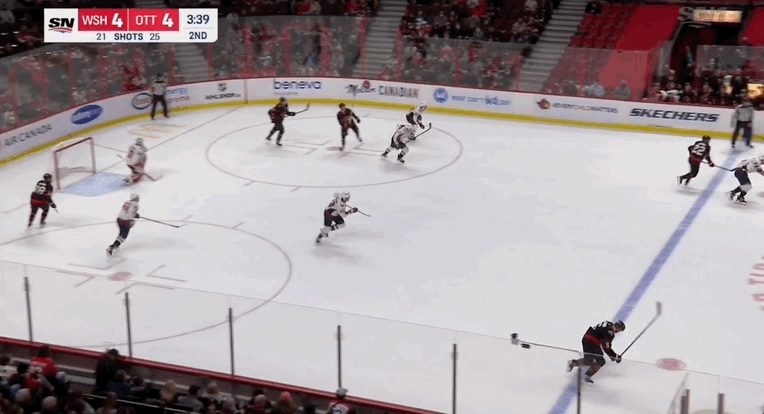
And once his one-timer starts to covert — which given his efforts in all situations, it should soon — Ovechkin should continue scoring at a high rate (just not at this current pace, which is unrealistic to expect over 82 games).
It may not seem practical for a 36-year-old to keep playing at this level and be expected to maintain it, when most aging curves point to a steady decline at this point in a player’s career. Ovechkin isn’t immune to age-related decline, but a player who starts at such a high level does have much more room to fall to hit ‘average’ or even below it.
What also helps his case, according to the work of Eric Tulsky — now of the Carolina Hurricanes — is that power play scoring doesn’t drop off as quickly as even strength scoring does, which is where Ovechkin bolsters a high percentage of his numbers. While Tulsky did find that passers tend to age better, volume shooters like Ovechkin tend to be more reliable than low-shooting snipers.
So as Ovechkin is showing through 12 games, it’s going to take a lot to get him to stop scoring goals. Aging hasn’t…not yet at least. Shortened seasons and chaos in the environment of the past year didn’t. Injuries to his teammates, and subsequently, fewer options to receive a pass from haven’t. Neither has his signature shot not clicking yet.
Ovechkin is one of the best goal scorers in history. It’s apparently going to take a lot more to shake his game. And in the meantime, he’ll just keep pushing the record book.
Data via Sportlogiq
[relatedlinks]

